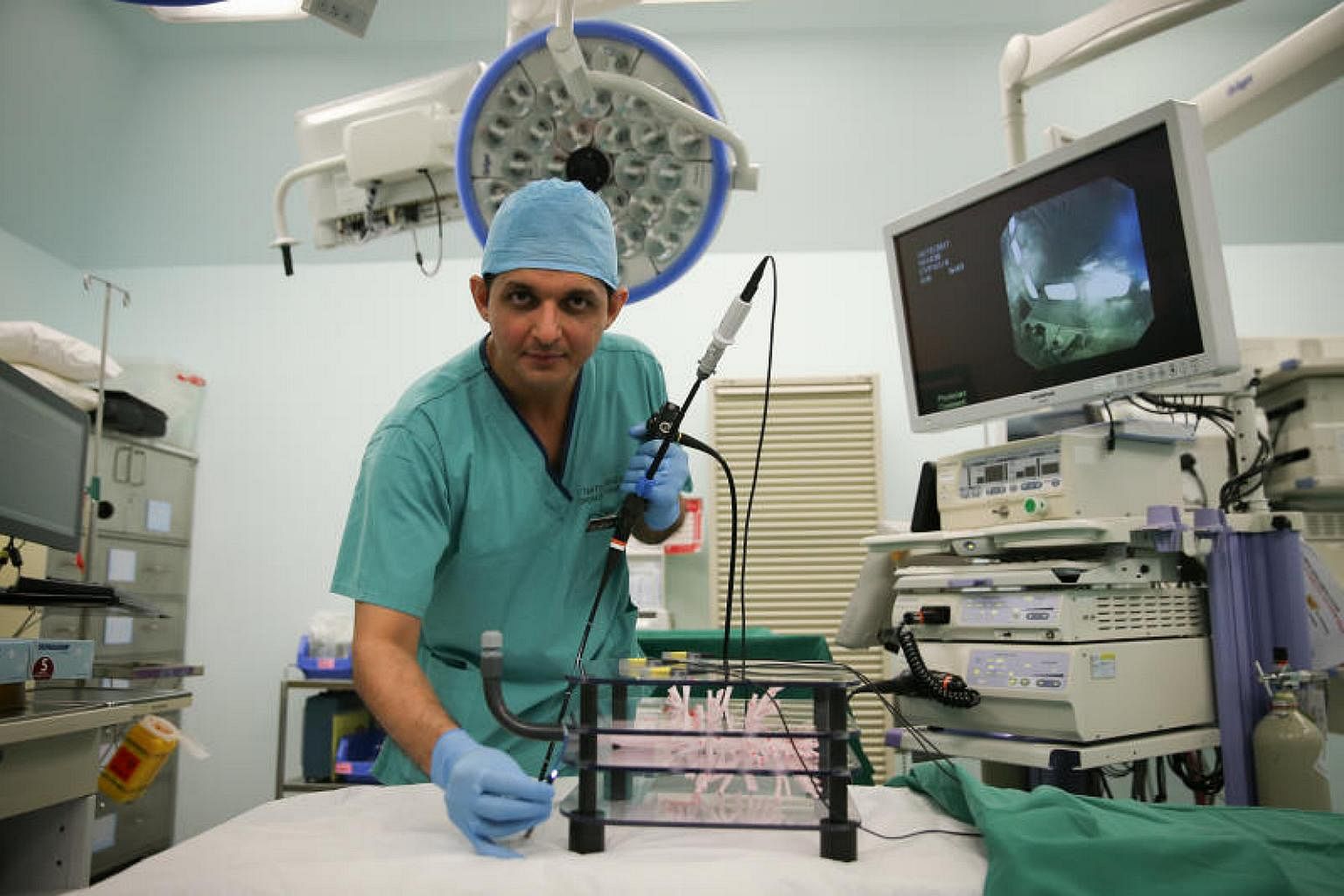Safer lung cancer diagnosis with first VR and GPS-guided procedure in Singapore
Sign up now: Get ST's newsletters delivered to your inbox

Dr Akash Verma poses with the navigational bronchoscopy, which uses virtual reality and a GPS-guided system to find and obtain suspected cancer cells in the lungs.
ST PHOTO: ONG WEE JIN
Raffaella Nathan Charles
Follow topic:
SINGAPORE - A new procedure allows doctors to pinpoint cancer in the lungs more accurately and could lead to an earlier diagnosis and treatment for the number one cancer killer in Singapore, said a doctor who helped bring the procedure here.
Dr Akash Verma, adjunct assistant professor at Tan Tock Seng Hospital (TTSH) and senior consultant in the department of respiratory and critical care medicine, said on Thursday (Dec 14) that the hospital was the first to adopt navigational bronchoscopy, which uses virtual reality and a GPS-guided system to find and obtain suspected cancer cells in the lungs.
In the procedure, which has been used, with no complications, in 33 patients so far, a 3D "road map" is created which will show several routes the doctors can choose to insert a tube through the windpipes to the target site with the suspected cancer cells. The onscreen map guides the procedure, showing how close or far away the doctor is - in centimetres - to the site. Once the trouble spot is reached, tissue samples can be grabbed using biopsy forceps or a triple needle brush inserted in the tube for testing.
There are currently several ways to to obtain a lung biopsy: traditional bronchoscopy, which does not have a virtual road map, transthoracic needle aspiration (TTNA), which also known as CT-guided biopsy, and wedge resection surgery. But those procedures come with risks, such as an up to 40 per cent risk of puncturing the lungs , mainly because doctors don't have a route to follow among all the organ's winding windpipes and vessels, said Dr Akash.
"The map makes it safer and more precise. If the white spot is indeed cancerous, we will dye the lung so that surgeons can later open it up, and know exactly where to work on," said Dr Akash.
According to the Singapore Cancer Registry Annual Report 2015, lung cancer was the leading cause of cancer deaths in males, accounting for 27.1 per cent, and the second leading cause of cancer deaths in females at 16.6 per cent.
Around 1,500 Singaporeans are diagnosed with lung cancer each year. Because symptoms do not show up until the later stages, 85 per cent are diagnosed in the third or fourth stages, when the disease is more advanced.
Though it does not solve this particular problem, a more precise diagnostic tool improves the outlook for patients with lung cancer, said Dr Akash, who learnt the procedure in the United States (US) several years ago.
Navigational bronchoscopy has been used in the US and Europe for more than 10 years, and is also available in Hong Kong, Malaysia and Korea, he said.
Two doctors at TTSH can do the procedure now and more will be trained.
The procedure helped locate the disease cells in Madam Ong S K in March.
"I initially thought I had 100-day cough, on and off since the middle of last year. But I got breathless when I climbed stairs, so I went for a check-up in March." the 55-year-old non-smoker said.
The lung biopsy obtained through navigational bronchoscopy showed she had Stage Four lung cancer.
"Not many women know that lung cancer can strike them too. We only think of breast cancer, or cervical cancer. My parents both had cancer but I just assumed I wouldn't because I had always lived healthily," the graphic designer said.

